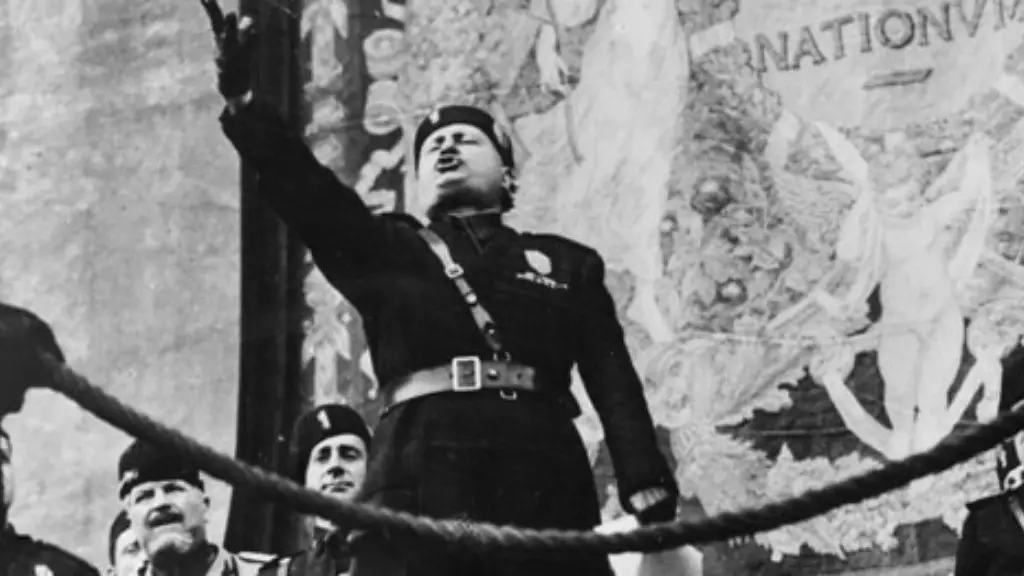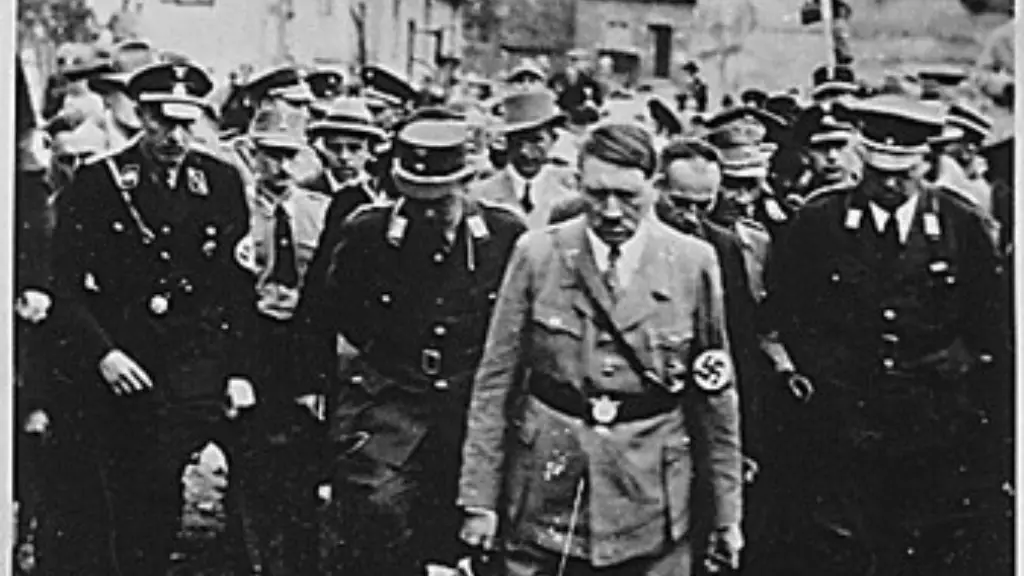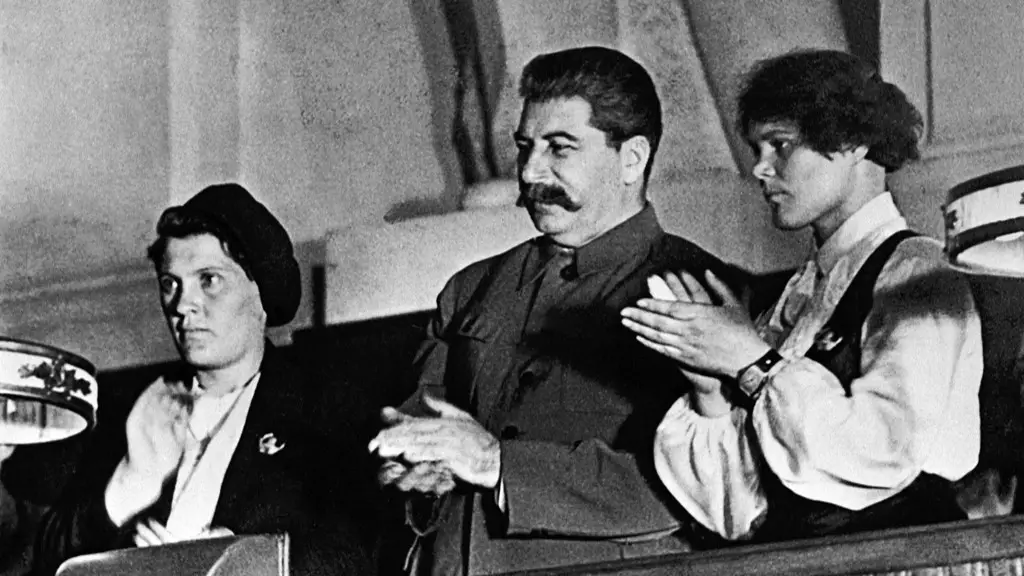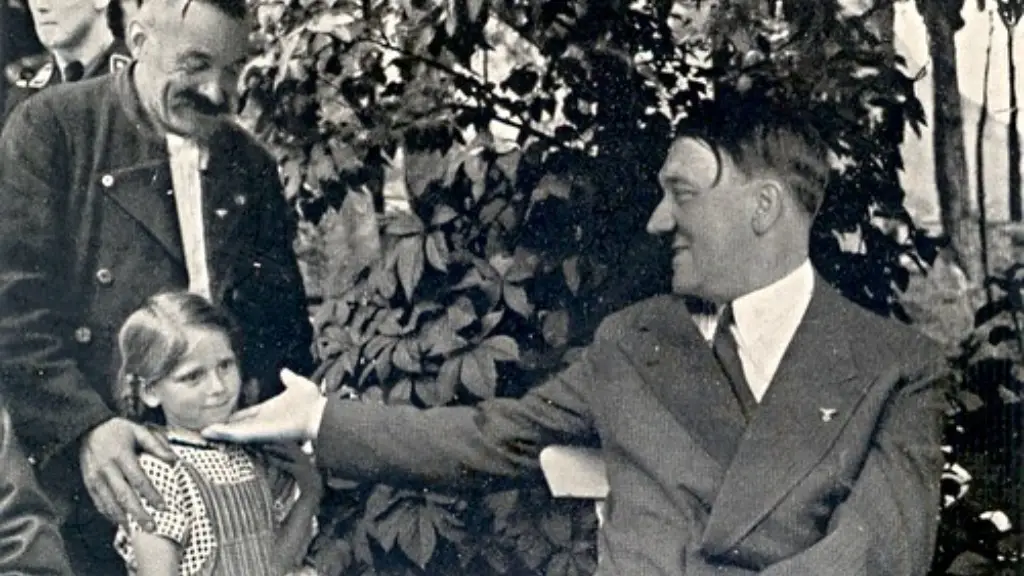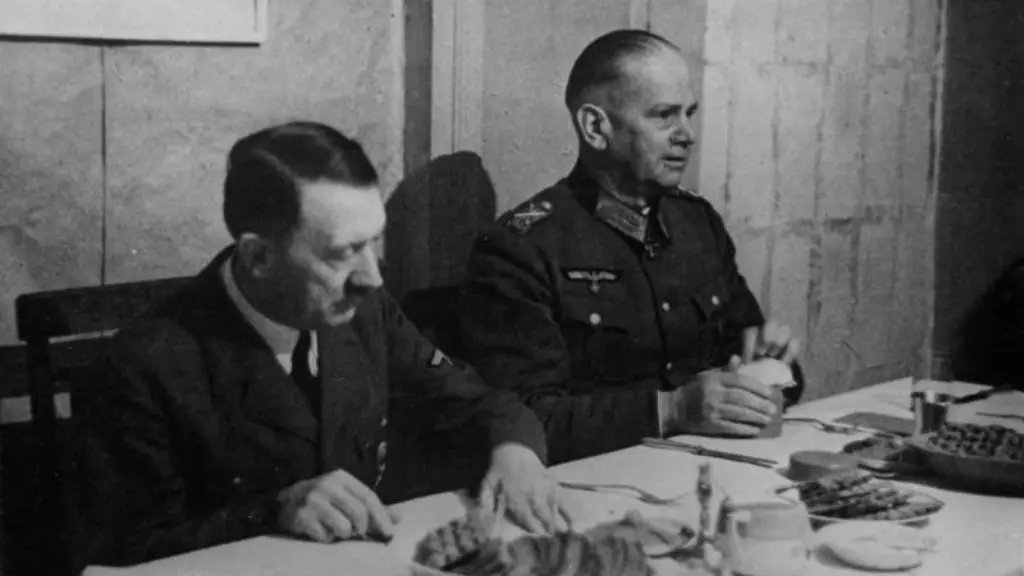Benito Mussolini was an Italian fascist dictator who ruled the country from 1922-1943. During his time in power, Mussolini made many changes to Italy. He improved the country’s infrastructure, made it more efficient, and strengthened the economy. He also suppressed dissent and opposition, and installed a totalitarian dictatorship. Mussolini was a controversial figure, and his legacy is still debated today.
Mussolini accomplished many things during his time as the leader of Italy. He helped to modernize the country and make it a major player on the world stage. He also enacted a number of controversial policies, such as bringing Italy into World War II and establishing a dictatorship. While his legacy is mixed, there is no doubt that Mussolini left a lasting mark on Italy and the world.
What is Benito Mussolini best known for?
Benito Mussolini was an Italian nationalist and the founder of Italian Fascism. He ruled Italy from 1922–1925 as Prime Minister, and from 1925–1943 as il Duce, the Fascist dictator. Mussolini’s Fascist takeover of Italy was an inspiration and example for Adolf Hitler and the Nazi Party in Germany.
The boom in the Italian economy during the 1920s boosted Mussolini’s political standing and enabled him to pursue what he really wanted: government control of the economy. Mussolini’s economic policies, which included heavy government regulation and intervention, were successful in bring about a period of economic growth and prosperity in Italy. However, the global economic downturn of the late 1920s and early 1930s led to a sharp decline in the Italian economy, and Mussolini’s government was ultimately unable to cope with the economic crisis.
Why was Mussolini a weak leader
Mussolini was a complex leader with a mixture of strengths and weaknesses. On the plus side, he was very effective in consolidating power, using propaganda to his advantage, and mending relations with the Catholic Church. However, he was weak in many areas, most notably his economic policies, foreign policy, and relations with Nazi Germany. Ultimately, these weaknesses led to his downfall.
In 1922, Mussolini and a coalition of fascist leaders took over the government in Rome. Mussolini was appointed prime minister and by 1925, he had dismantled Italy’s democratic government. He declared himself Il Duce (“The Leader”) and ruled as a dictator.
What did Mussolini promise to gain power?
Benito Mussolini was a newspaper editor and politician who became the leader of the Fascist Party in Italy. He promised to revive Italy’s economy and rebuild its armed forces. As economic conditions worsened, his popularity rapidly increased. In 1922, he was appointed Prime Minister of Italy. Mussolini held dictatorial powers and oversaw a period of totalitarian rule in Italy. He was eventually ousted from power and was killed by Italian partisans in 1945.
Mussolini’s famous slogan appeared in 1926: “Everything in the state, nothing outside the state, nothing against the state.” By that time, Italy was under a one party dictatorship of which he was the leader. Even so, the Fascist party did not become all powerful.
Why was Mussolini kicked out?
Italians were torn on whether to intervene in World War I – many socialists advocated for neutrality, while others, like Mussolini, argued that Italy should take advantage of the opportunity to expand its territory. Mussolini was expelled from the Socialist Party for his stance, but he didn’t give up on his dream of a united, empire. In the years following the war, Mussolini founded the Fascist Party and rose to power, ultimately leading Italy into the war as an Axis power.
Benito Mussolini was an Italian political leader who became the fascist dictator of Italy from 1925 to 1945. Originally a revolutionary socialist and a newspaper journalist and editor, he forged Italy’s violent paramilitary fascist movement in 1919 and declared himself prime minister in 1922. Under Mussolini, Italy became a one-party dictatorship and embarked on a program of aggressive expansionism in Ethiopia and later in Europe, which culminated in Italy’s joining Nazi Germany in World War II. Mussolini was overthrown in 1943 by a coalition of Italians, and he was executed in 1945 by Italian partisans. His body was then hung upside down from a meathook in a public square in Milan.
What did Mussolini do for fascism
Mussolini’s fascist regime in Italy was characterized by strict controls on the political process and a crackdown on dissent and opposition. All political parties except for the Fascist Party were outlawed, labor unions and strikes were banned, and a political police force was established to suppress any resistance to the regime. The Fascist Grand Council rubber-stamped Mussolini’s decrees, effectively making parliament irrelevant. These measures helped to solidify Mussolini’s dictatorshipt and keep the Italian people in line.
Fascism is an extreme right-wing ideology that glorifies the state and nation above the individual. It calls for a strong, centralized government controlled by a single leader, and is often associated with military dictatorship and totalitarianism. Mussolini was one of the first to experiment with fascist ideology, and while it was originally popularized in Italy, it soon spread to other European countries during the inter-war period.
Why did people like Mussolini?
Fascist sympathies were present in the United States during the 1920s and 1930s for a variety of reasons. Dr. Hull identified three main reasons: Mussolini’s presentation of masculinity; the Italian corporate state’s apparent ability to provide a solution to inherent problems of democracy; and Fascism’s capacity to offer a path towards economic recovery.
Mussolini’s presentation of masculinity was appealing to many Americans who were concerned about the nation’s decline in traditional values. The Italian corporate state’s apparent ability to provide a solution to inherent problems of democracy was also attractive to Americans who were dissatisfied with the status quo. Fascism’s capacity to offer a path towards economic recovery was appealing to many who were struggling during the Great Depression.
While there were many reasons why Americans may have been attracted to Fascism, it is important to remember that the vast majority of Americans did not support the movement.
The Blackshirts were founded in 1921 as the Milizia Volontaria per la Sicurezza Nazionale (“Voluntary Militia for National Security”) and grew out of the members of the Arditi (“The Daring Ones”), a World War I assault force.
The black shirts of the original squadrons wore black neckties and armbands with the fascist symbol of the fasces. The first squadrons of Blackshirts were raised in March 1919 to counter a general strike by workers, but they quickly came to be used to strong-arm Mussolini’s opponents.
The Blackshirts were organized into squads of a dozen or so men each, commanded by a lieutenant. They wore black paramilitary uniforms with black boots and carried black batons.
The Blackshirts were used to break up protests and to intimidate and terrorize Mussolini’s opponents. They were also used to attack and disrupt the meetings of rival political parties.
The Blackshirts became infamous for their violence and brutality. They were involved in numerous murders and street fights, and they were implicated in the deaths of a number of high-profile politicians, including Giovanni Giolitti, Matteotti, and Socialist deputy Alberto Mechilli.
What were Mussolini’s beliefs called
Mussolini’s fascism was a unique political philosophy that extolled the virtues of capitalism and private property while also promising to end political corruption and labor strife. This philosophy proved to be very appealing to Italians in the early 20th century and helped Mussolini to gain power.
The Italian declaration of war against the United States was a response to the American declaration of war against the Empire of Japan following the attack on Pearl Harbor. The Italian move was widely seen as a result of the country’s alliance with Germany, and it drew the United States into the European theater of World War II.
What are the 5 main ideas of fascism?
Fascist movements are characterized by a strong authoritarian streak, with a hierarchy that favors the elites and a militaristic outlook. They also tend to be nationalist, often to the point of racial nationalism, and to espouse a myth of decadence. Other aspects of fascism, such as its anti-egalitarianism and totalitarianism, can be seen as stemming from these core ideas.
Fascism is a political movement that has been on the rise in recent years. It is defined as a political movement that embraces far-right nationalism and the forceful suppression of any opposition, all overseen by an authoritarian government. Fascists strongly oppose Marxism, liberalism and democracy, and believe the state takes precedence over individual interests.
Fascism first gained a foothold in Europe in the early 1920s, and over the next few decades, it spread to other parts of the world, including Asia and Latin America. In the 1930s and 1940s, fascist regimes came to power in a number of countries, including Italy, Germany, and Japan. These regimes were characterized by their aggressive expansionism, their repressive domestic policies, and their commitment to total war.
Since the end of World War II, fascism has been in decline, but there has been a resurgence of fascist activity in recent years. This has been seen in the rise of far-right political parties, as well as in the growth of neo-fascist and white supremacist groups.
The rise of fascism is a cause for concern, as it represents a threat to democracy, human rights, and global peace. It is important to learn about fascism and its history, so that we can be
Who is the father of fascism
Fascism is a political ideology that rose to prominence in the early 20th century. Fascism is characterized by strong autocratic leaders, a single-party system, aggressive nationalism, and a disdain for liberalism and democracy. Benito Mussolini was the first fascist leader and he set the template for everything that came after him. Fascism ultimately led to World War II and the rise of Nazi Germany.
Fascism is a way of organizing a society in which a government controlled by a dictator rules the lives of the people. People are not allowed to disagree with the government. Fascism rose in Europe before World War II.
Conclusion
Benito Mussolini was the prime minister of Italy from 1922 to 1943. He was a leading member of the National Fascist Party and is considered one of the key figures in the creation of Fascism. Mussolini achieved a number of important successes during his time in office, including the establishment of the fascist state, the expansion of the Italian Empire, and the modernization of the country. He also played a significant role in the Second World War, initially as an ally of Nazi Germany, but later as a rival. Mussolini was eventually overthrown by his own people in 1943 and executed in 1945.
Benito Mussolini was a dictator of Italy who led the National Fascist Party. He ruled Italy from 1922 until his death in 1945. Mussolini achieved many things during his time in power, including making Italy a leading power in Europe, crushing domestic opposition, and increasing the country’s impact on the world stage. He also oversaw a number of social and economic reforms that improved the lives of Italians. However, Mussolini’s legacy is also tainted by his role in leading Italy into World War II, as well as his use of violence and repression against his opponents.
